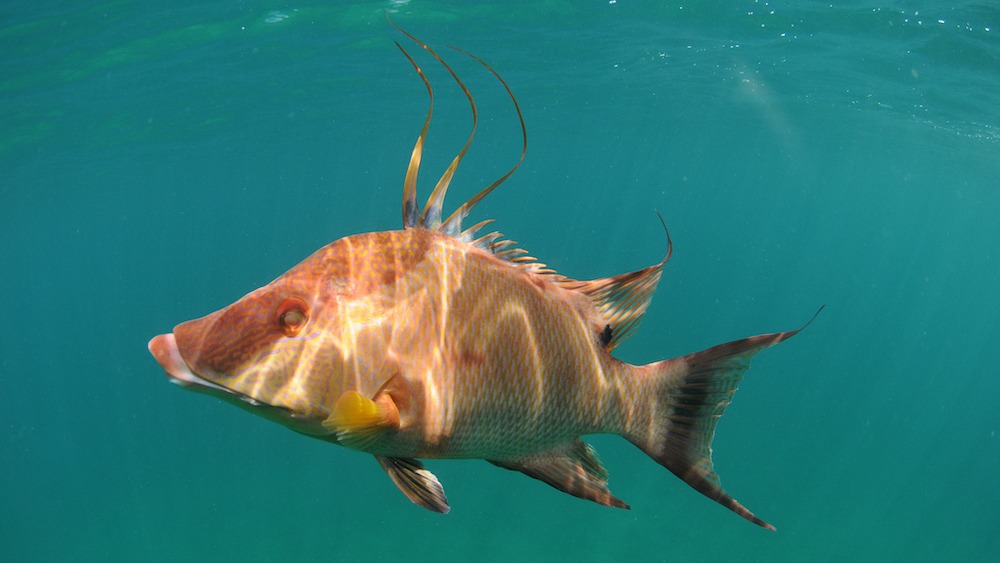Color-changing hogfish use their skin to 'see' themselves — even after they're dead
Hogfish can not only change colors but also "see" with their skin.

Hogfish are the chameleons of the Atlantic Ocean, seamlessly changing their skin color depending on their environment. As if those morphing skills weren't impressive enough, these reef dwellers can also "see" with their skin with the help of special light-sensing cells, even after they die, according to a study published Tuesday (Aug. 22) in the journal Nature Communications.
Lorian Schweikert, an assistant professor in the Department of Biology and Marine Biology at the University of North Carolina Wilmington as well as an avid angler, witnessed this color-shifting phenomenon firsthand during a fishing expedition in Florida, when she watched a hogfish (Lachnolaimus maximus) she caught change its skin color to match the patterned white deck of the boat.
"They appear to be watching their own color change," Schweikert, who is also the lead author of the study, said in a statement.
Hogfish are typically found in coral reefs and are master magicians; as protogynous hermaphrodites, they can switch their sex from female at birth to male as adults, according to the Georgia Aquarium.
Now Schweikert and her co-authors think they've discovered how this color-shifting magic works by identifying specialized light-sensing cells located beneath a layer of color-changing cells in the hogfish's skin. This system enables them to watch their skin change color and adjust it to match their surroundings, according to the study.
Related: Barreleye fish: The deep-sea weirdo with rotating eyes and a see-through head
This finding comes on the heels of a 2018 study in which Schweikert and her colleagues identified light-detecting proteins in hogfish skin. Called SWS1 opsins, these proteins are particularly sensitive to blue light. (Interestingly, they're also found in human retinas.) By using a biochemical technique known as immunolabeling, that research team pinpointed the proteins' exact locations in hogfish skin samples.
Get the world’s most fascinating discoveries delivered straight to your inbox.
In the new study, the researchers likened the fish's light-sensitive opsins to "internal Polaroid film," since it "captures changes in the light" that hogfish can filter through their cells, according to the statement.
"The animals can literally take a photo of their own skin from the inside," co-author Sönke Johnsen, a biology professor at Duke University, said in the statement. "In a way they can tell the animal what its skin looks like, since it can't really bend over to look."
However, researchers were quick to emphasize that hogfish can't actually see with their skin as they do with their eyes, because eyes do more than detect light; they also receive information from the brain to unveil images.
"Just to be clear, we're not arguing that hogfish skin functions like an eye," Schweikert said in the statement. "We don't have any evidence to suggest that's what's happening in their skin."
Jennifer Nalewicki is former Live Science staff writer and Salt Lake City-based journalist whose work has been featured in The New York Times, Smithsonian Magazine, Scientific American, Popular Mechanics and more. She covers several science topics from planet Earth to paleontology and archaeology to health and culture. Prior to freelancing, Jennifer held an Editor role at Time Inc. Jennifer has a bachelor's degree in Journalism from The University of Texas at Austin.


